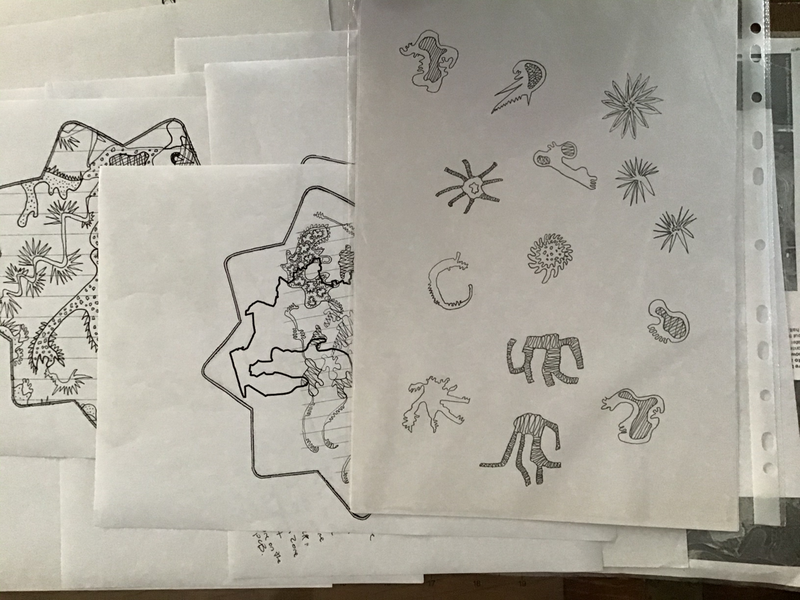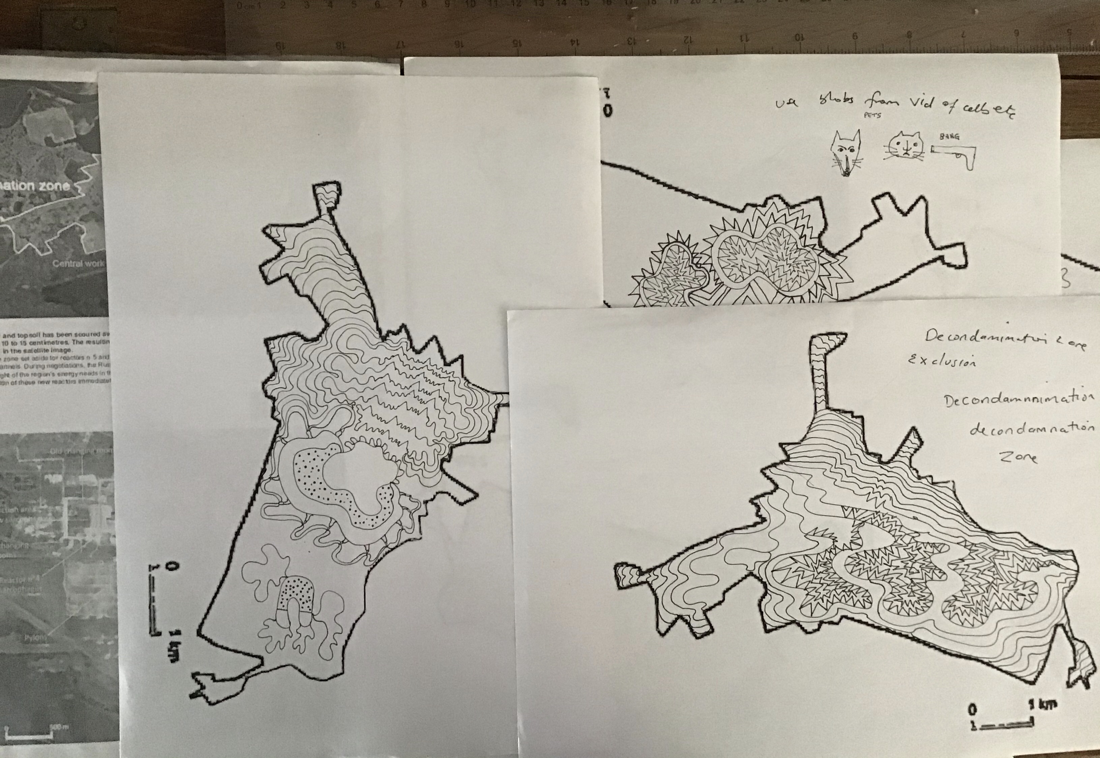|
Chernobylizer - designed by Lisa McKendrick and Tim Drage © 2020 The drawings for the Chernobylizer were based around the shape of the exclusion zone and the decontamination zone. The descriptions by those involved in the Chernobyl clean up, of radiation causing electrical equipment to fail causing them to stop working seemed very interesting to me - That an invisible source of energy could cause a machine to stop working. It only makes you wonder what effect it has on the human body. As we know there are radiation burns and more obvious signs but there are also more invisible things that happen later. As radiation can affect DNA which leads to mutations I was interested in what these mutations might look like and explored these further in my drawings. The touch pads are something like mutated forms, and as they are central to the playability of the synth I wanted them to have a voice. What message do they have for us? This can only be experienced by the player’s own human contact with the device. Both at that time when human contact with the radiation was highly dangerous, but also during the current crisis where we have become transmitters and spreaders of disease, our human touch has become something to be feared. The touch pads welcome you back into the touchy feel of your own body interacting with another and here it is not something to be feared. Rather the capacitance of your own body and its ability to be a conductor of electricity allow an interaction to take place between human and machine. When trying to picture radiation I imagined that radiation had teeth, invisible and sharp eating away at the very fabric of a victims genetic make up, changing them, transforming their genetic lineage. It seems ironic that the method that we use to create energy would come back and bite us with these invisible teeth reminding us that we are flesh, blood and circuitry subject to the laws of physics. That radioactive waste, as impossible as it is to neutralise, is the result of the very energy that we employ everyday. We employ its creative and destructive mathematics and chemistry, its splitting of atoms. I am no nuclear physicist and I do not have the language to describe the process accurately, but I have imagined, through my drawing, the shapes of this transformation and the resulting energy that powers the device. I think of our sun and the many other suns caught up in a nuclear process of creating and maintaining energy and I think of stars that die when they finally burn out. Perhaps for a moment while feeling the full force of radiation there is the Mystical feeling of pure energy beyond the fragility of the human body. As with most noise and experimental devices that I’ve played, it has always been the interaction with pure unclassically trained energy which I find most interesting and the unpredictability of the sound, oscillating in shapes as it passes through filters, is held within capacitors then released through a gate. With the added human interaction as energy conductor the player can be part of the circuit, a component of its unpredictability. It is a reminder that we are part of something bigger and complex, that we are always part of a system and held by laws of the universe at times Berserk. I hope when playing the Chernobylizer that some of these ideas are transmitted and reinterpreted by the player in their own idiosyncratic way. Drawings: Lisa McKendrick The placement of the components was something that we wanted to kind of resemble the Chernobyl plant. The large capacitors reference the four nuclear reactors. These capacitors are central to the draining sound that can be heard in the instrument as they store current and then slowly drain power from the main oscillators when the switch is turned off. The five knobs at the top are like controllers overseeing the whole site/circuit and bring attention to the human actions that controlled the blast of reactor 4 from the control room. The touchpads naturally work well at the outer edges of the PCB for easy access, and serendipitously there turned out to be the exact number of them to fill the triangles around the fortification layout we used for the PCB shape.
We have been playing around with the prototype now for a couple of weeks both to see if it works and how functional it is as an instrument. We are making a few modifications to correct some of the circuit problems that were encountered but are happy to say that the touch pads work very well as does the power starve function. The filter section of the circuit isn't working as it did on the breadboard so we will be correcting this for the final version. |
AuthorLisa McKendrick Archives
May 2024
Categories |





















 RSS Feed
RSS Feed
